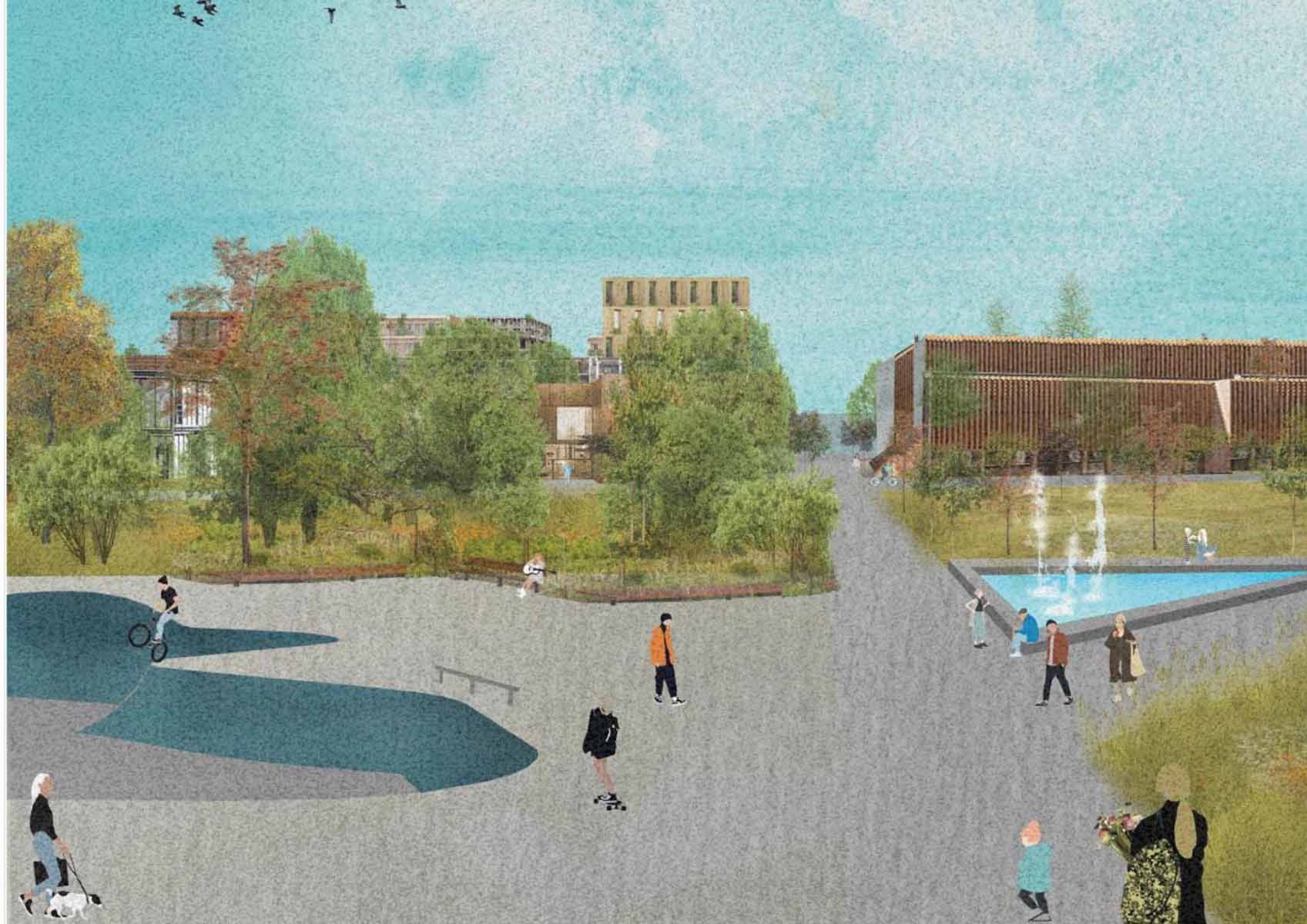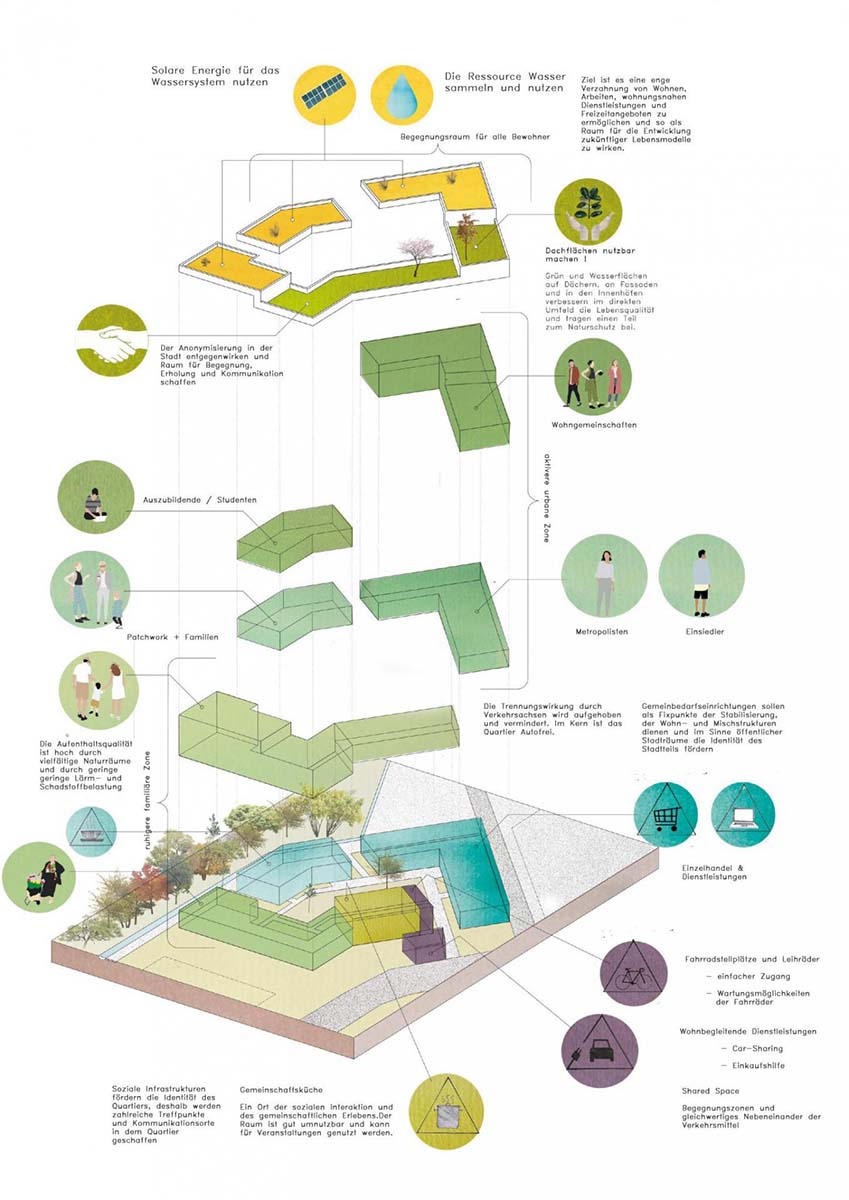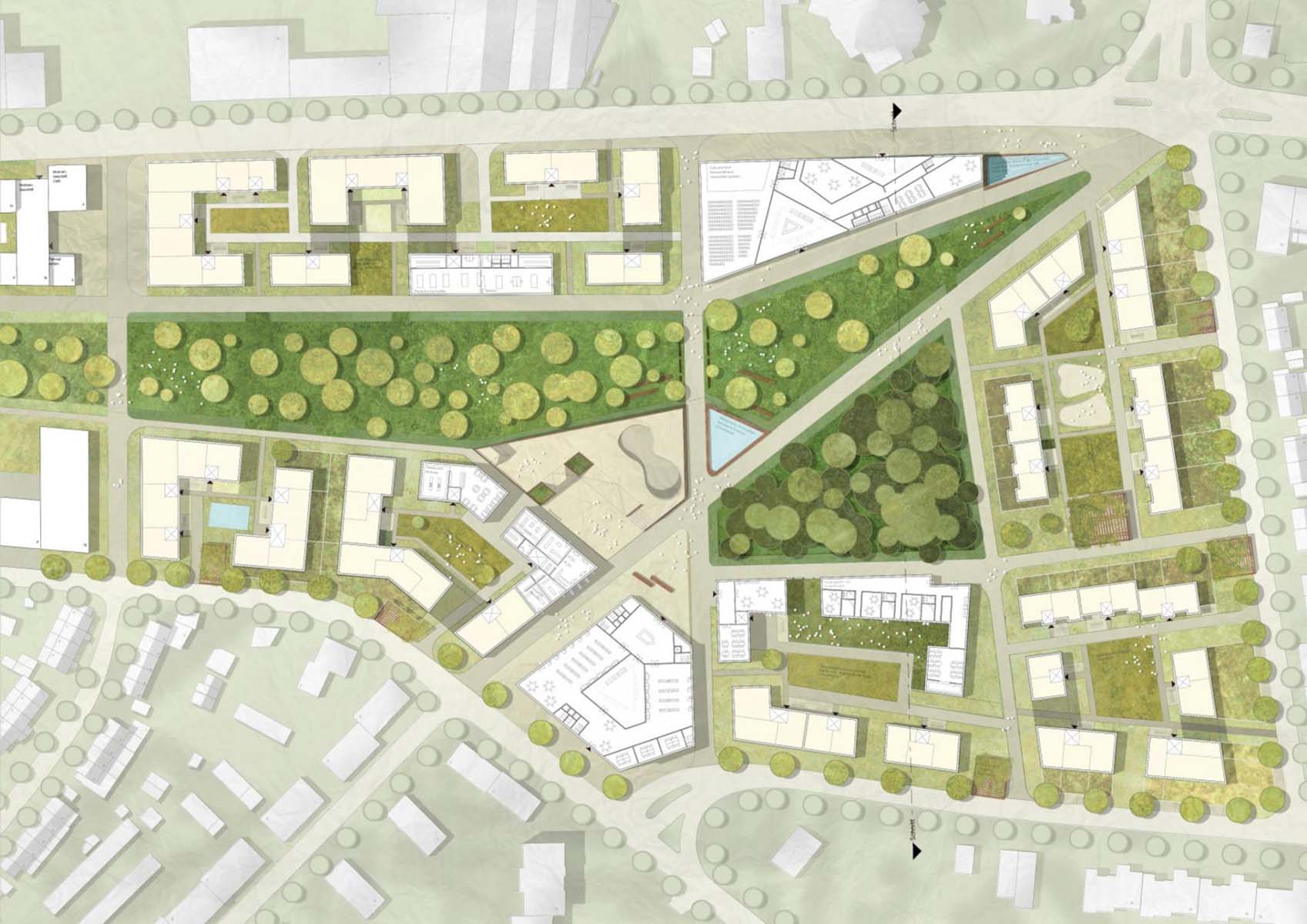


Sabrina Seiferth, Sarah Lettau, Jeronimo Latz
Sabrina Seiferth, Sarah Lettau, Jeronimo Latz
Sabrina Seiferth, Sarah Lettau, Jeronimo Latz
Prof. Dipl.-Ing. Andreas Fritzen
Komplexität
Städte sind einerseits ungewöhnlich beharrliche Gebilde, die der Dynamik der Veränderung eine große Trägheit entgegenstellen. Grundstrukturen, funktionale Zusammenhänge, bauliche räumliche Systeme überdauern oft viele Bewohnergenerationen, ändern sich teilweise nie, obwohl ganz unterschiedliche „Gesellschaften“ sie nutzen. Städte sind andererseits die Form gesellschaftlichen Zusammenlebens, die Schnelligkeit, Innovation, Austausch, Wandel und Moden geradezu versinnbildlicht. Die Industriegesellschaft und unsere heutige Informationsgesellschaft sind ohne Städte undenkbar. Städte scheinen mit diesem Gegensatz hervorragend umgehen zu können. In dem „komplexen System Stadt“ werden Unterschiede geduldet; sie stellen eine Schlüsselqualität von Städten dar. Ausnahmen von der Regel, Brüche im System, Entwicklungen gegen die Logik machen den Reiz städtischen Lebens aus.
Stadt – Umland
Spätestens seit dem Beginn des zwanzigsten Jahrhunderts beginnt die europäische Stadt mit ihrem eigenen Gegensatz – dem Umland – in Beziehung zu treten. Das einst gegensätzliche Begriffspaar „Stadt“ und „Umland“ kann mittlerweile nur noch als ein Ergänzungsverhältnis beschrieben werden. Dies ist keine Schwächung der Stadt, keine Auflösungserscheinung, bei der die Qualitäten der Stadt und des Umlandes zwangsläufig verloren gehen. Vielmehr muss es möglich sein, in diese intensiver werdende Beziehung zwischen Stadt und Land, zwischen Gebautem und Gewachsenem planerisch einzugreifen, um diese Entwicklung ökologisch verträglich, ökonomisch sinnvoll und gesellschaftlich sozial zu gestalten.
Klimagerechte StadtLandschaft
Diese Sichtweise auf das komplexe System Stadt-Land wird in der Lehre an der Hochschule Bochum im Rahmen von städtebaulichen Entwürfen und begleitenden Vorlesungen im „Bachelor Architektur“ vermittelt. Im 3. und 6. Semester erarbeiten die Studierenden zunächst in kleinen vereinfachten Übungen und später anhand von großen städtebaulichen Entwurfsaufgaben Lösungen für die klimagerechte StadtLandschaft von morgen. Im „Master Städtebau NRW“ (in Kooperation mit vier weiteren NRW-Hochschulen) und im „Master ArchitekturProjektEntwicklung MAE“ wird dieses Wissen vertieft.
Design and Urban Design
Complexity
Cities are unusually persistent entities that oppose the dynamics of change with great inertia. Basic structures, functional interrelationships, and spatial systems often outlast many generations of residents, sometimes never changing, even though they are used by very different “societies.” But cities are also the formal embodiment of a social coexistence that in essence symbolizes speed, innovation, exchange, transformation, and fashions. The industrial society and today’s information society are unthinkable without cities. Cities appear to be capable of coping with this contrast very well. Differences are tolerated within the “complex system of the city”; they represent a key quality of cities. Exceptions to the rule, breaks in the system, developments against logic are what make urban life so appealing.
Urban—Rural
Since the beginning of the twentieth century at the latest, the European city has started to form a relationship with its essential opposite: the surrounding rural area. The once classic dichotomy of “city” and “countryside” can now only be described as a complementary relationship. This is not a weakening of the city, not a dissolution in which the qualities of the city and the surrounding countryside are inevitably lost. Rather, it must be possible to intervene in this increasingly intensive relationship between the urban and the rural, between what’s already built and what’s being developed, through design and planning in order to make this development ecologically tolerable, economically reasonable, and socially inclusive.
Climate-Friendly Urban Landscape
This perspective of the complex urban-rural system is taught at the Bochum University of Applied Sciences within the framework of urban design studios and accompanying lectures during the Bachelor of Architecture program. In the third and sixth semesters, students first work on developing solutions for the climate-friendly urban landscape of tomorrow in small, simplified exercises and then via large-scale, urban design briefs. This knowledge is consolidated in the Urban Design NRW master’s program (in cooperation with four other North Rhine-Westphalia universities) and in the MAE Architecture Project Development master’s program.